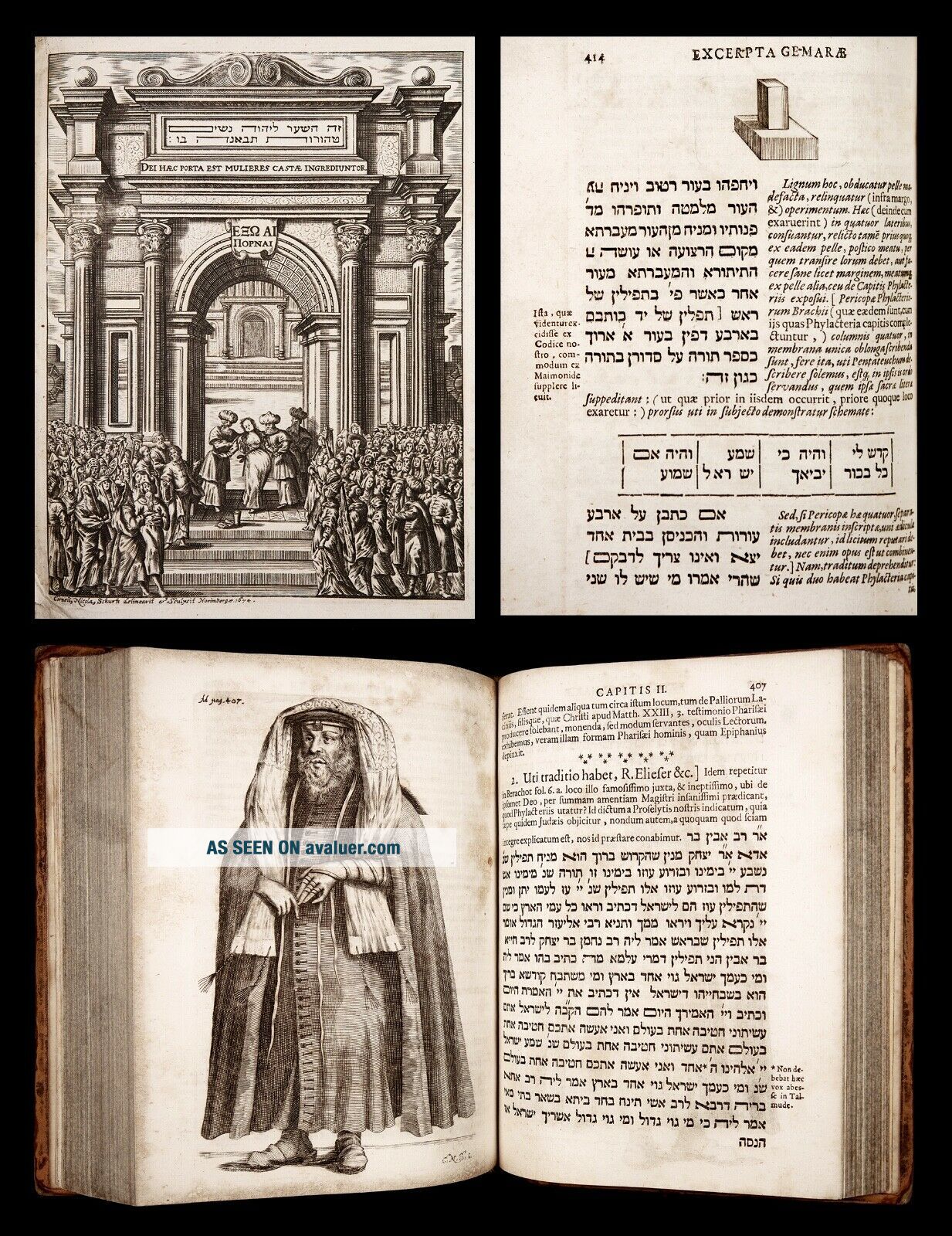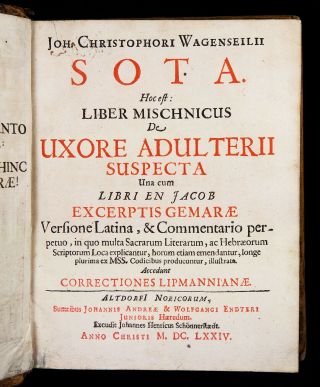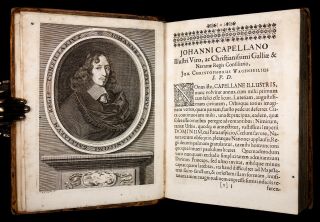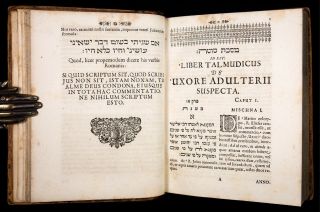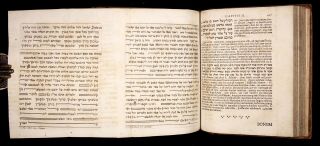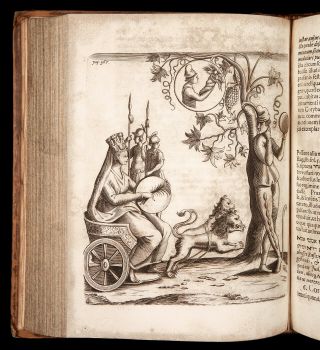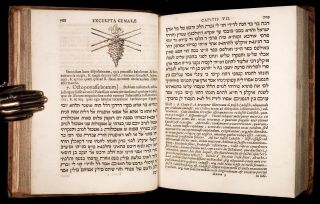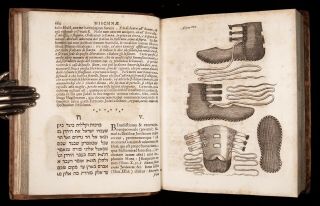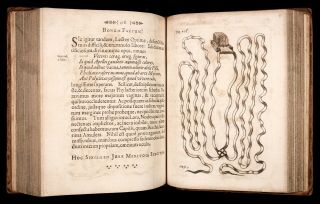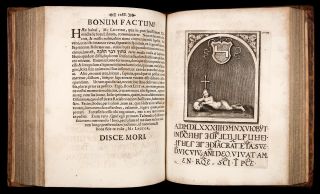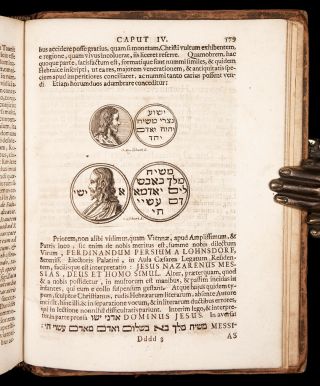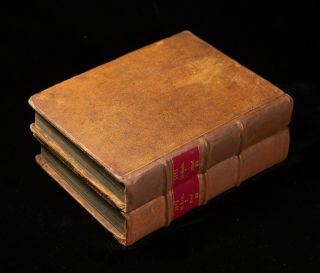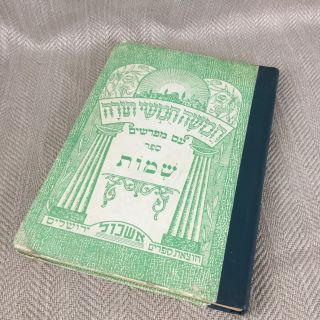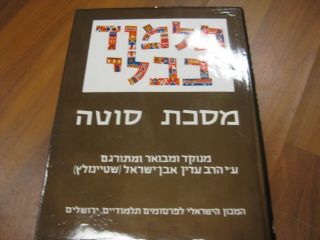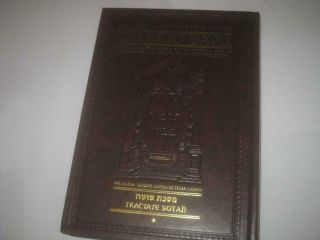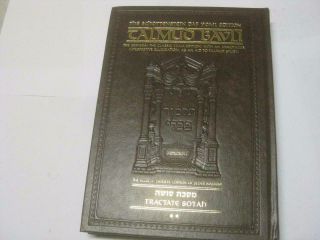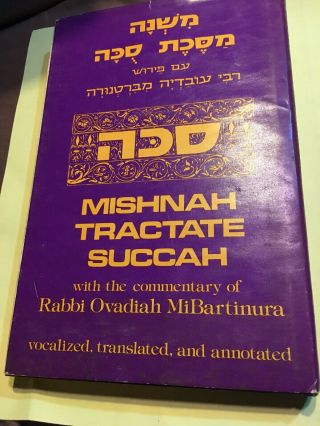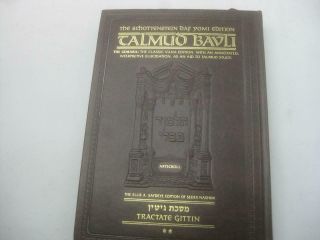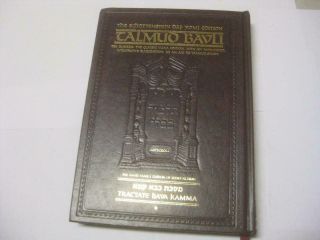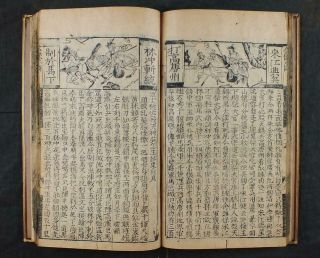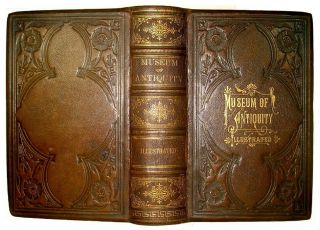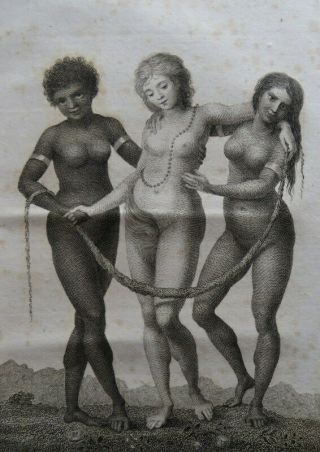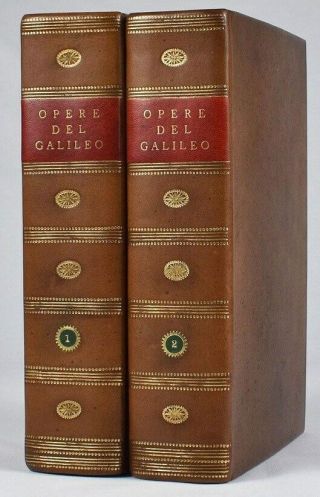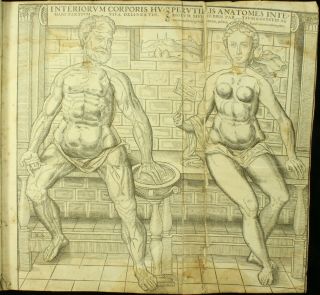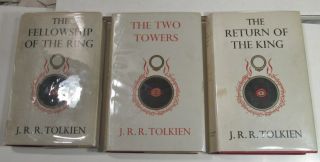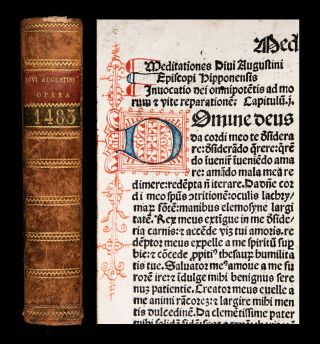Judaica 1674 Wagenseil MISHNAH SOTAH Hebrew TALMUD Judaism Jewish WOMEN Adultery
Item History & Price
Printed in Altdorf by Johann Heinrich Schönnerstädt, for J. A. & W. Endter, 1674.
A large quarto, here bound in two volumes.RARE 1ST EDITION with BILINGUAL HEBREW-LATIN TEXT.
Text mainly in Hebrew and Latin, with many passages in Greek, some in Arabic, and Syriac Aramaic; and some text in German. Illust...rated with a superb extra engraved title-page, 10 copper-engraved plates by Cornelius Nicholas Schurtz and many smaller engravings in text.
“Wagenseil translated Sotah about women suspected of adultery (1674), to which he wrote an ample and brilliant commentary that enjoyed a wide reputation in the learned world." (Josef Eskhult, in Acta Universitatis Upsaliensis: Studia Latina 32, p.36]The work includes the entire Hebrew text of the Mishnaic Tractate Sotah with parallel Latin translation and extensive notes, along with the relevant extracts (also in both Hebrew and Latin) from the Gemara (rabbinical commentary on the Mishnah) as well as Ein Ya'akov, a compilation of the Aggadic material in the Talmud with commentaries by Jacob ibn Habib (c. 1460 - 1516), a rabbi and talmudist born at Zamora, Spain. Added at the end (with a divisional title and separate pagination) are the "Corrections" to Sefer ha-Nizzahon by Yom Tov Lippmann Mülhausen (d. 1421), first published by Theodore Hackspann (Altdorf, 1644).
Mülhausen was eminent rabbinic leader in Bohemia, halakhist, philosopher, kabbalist, anti-Christian polemicist and commentator. “He authored a polemical treatise against Christianity entitled Sefer ha-Nitsahon ('Book of Victory') which was widely read by Jews in Europe and known to Christians as well. During the seventeenth century, it was partly translated to Latin, printed, read, and answered by Christian polemicists. [...] Muhlhausen was a central figure of a circle of Jewish philosophers who were active chiefly in early fifteenth-century Prague. He was one of the first Ashkenazi intellectuals who combined Maimonidean philosophy with Kabbalah." (Encyclopedia of Renaissance Philosophy)“The volume opens with a full-page depiction of the sotah (a woman suspected of adultery) being tested by the priests. The elaborate frontispiece to Sotah was designed by the engraver Cornelius Nicholas Schurtz (1651 - 1700). [...] Carlebach describes the engraved frontispiece as one in which a debauched sotah is led through the portal by the priest, paints Jewish morals in an unflattering light. The portal was adorned with a trilingual set of inscriptions: in Hebrew, 'וב הנאנב םירוהט םישנ הוהיל רעשה הז'; in Latin 'Dei Haec Porta est Mulieres Castae Ingrediuntor'; and in Greek ΕΞΩ ΑΙ ΠΟΡΝΑΙ. [...] The volume has numerous illustrations, including several that are full page. Among them are depictions of a priest wearing talit and tefillin, tefillin with their straps for the head and arm, Magen David symbols, halitzah shoes, coins, and an undressed woman with skull and cross." (Marvin Heller, Printing the Talmud, p.323)Tractate Sotah (Hebrew: שוטה) deals with the ordeal of the bitter water — the woman suspected of adultery — as well as other rituals involving speech. In most editions this tractate is the sixth in the order of Nashim, and it is divided into nine chapters.Sotah constitutes a part of Nashim, the third of the six orders of the Mishnah containing family law.The Mishnah or Mishna (Hebrew: מִשְׁנָה, "study by repetition") is the first major written collection of the Jewish oral traditions known as the "Oral Torah". It is also the first major work of Rabbinic literature. The Mishnah was redacted by Judah the Prince at the beginning of the third century CE, in a time when, according to the Talmud, the persecution of the Jews and the passage of time raised the possibility that the details of the oral traditions of the Pharisees from the Second Temple period (536 BCE - 70 CE) would be forgotten.“Sotah (beginning in Talmudic literature) is the term for a woman suspected of adultery, who must undergo an ordeal that will establish her guilt or innocence. Numbers 5:11-31 describes in detail the ritual, which a priest performs in the Tabernacle to determine whether a woman whose husband suspects her of adultery is indeed guilty. The Torah (Pentateuch) determines that a husband who suffers from 'a spirit of jealousy' and suspects his wife must bring her to the priest at the Tabernacle. There the priest performs a series of ritual acts: he offers a 'meal-offering of jealousy, ' an offering of ground barley without oil or frankincense, unbinds the woman's hair, makes her swear an oath that she had sexual relations with no man other than her husband, writes the oath in a scroll and erases it in water mixed with dust from the Tabernacle, and finally makes the woman drink the mixture. “This mixture, which the Torah calls 'the bitter, curse-causing waters, ' contains the oath and the curses that accompany it, and ultimately determines the woman's fate. As the woman drinks the potion, the outcome of the trial appears on her body, confirming or refuting her husband's suspicions: If she is guilty, the water will cause the woman to become infertile (the expressions 'her thigh falls' and 'her belly distends' are probably euphemisms for harm to the sexual organs), but if she is innocent the water will do her no harm and even cause her to become fertile. [...]“An entire section in the Mishnah, Tractate Sotah, is devoted to the ritual. The ritual described in the Mishnah differs significantly from the scriptural version (much more so than the versions of Philo and Josephus). The Mishnaic ritual contains stages of abasing and humiliating the woman in public and ends with her death in the Temple. Indeed, some Tannaitic sources oppose these stages explicitly, claiming that: 'It is not appropriate to degrade the Israelite daughters in a manner that exceeds what is written in the scripture' (Sifre, Numbers 11). The harsh ritual is softened somewhat in the Mishnah, in the assertion that a woman's merits may postpone her punishment even for many years ('pending merit, ' Mishnah Sotah 3: 4), and in the law that 'As the water probes her [the alleged adulteress], it probes him [the adulterer] as well' (Mishnah Sotah 5:1).“Although the Sotah trial was probably discontinued [...] during the Second Temple era, its cultural presence continued due to the study of Tractate Sotah as part of the talmudic codex. With the growth of awareness of gender issues, the question of the representation of femininity and the tractate's attitude to it has arisen in all its acuteness. The extreme character of the ritual and its essential inequality have led to different ways of coping with it, ranging from apologetics to severe criticism. It has also inspired various artistic treatments, such as the play 'Sotah', created and performed by the Jerusalem Theater Company (1999)..." (Ishay Rosen-Zvi, 'Sotah, ' in Jewish Women: A Comprehensive Historical Encyclopedia - Jewish Women's Archive)This important Hebrew-Latin edition of Sotah is the first published work of Johann Christoph Wagenseil (1633 - 1705), a notable German historian and Christian Hebraist. Wagenseil was born in Nuremberg, and, as a youth he was educated at Stockholm, Greifswald, and Rostock before entering the University of Altdorf In 1649. He traveled widely in Europe and became a member of numerous scholarly societies. In 1665 he received a doctorate of law at the University of Orleans. In 1667 he was made professor of history and civil law at Altdorf and then served professor of Oriental languages at the same university from 1674 to 1697.During his professorship at Altdorf he published a series of writings on Judaism and the Jews. His most well-known work was Tela ignea Satanae (Altdorf, 1681), a collection of works written by Jews for use in Jewish-Christian disputations and controversies, which Wagenseil published for the first time, with a Latin translation and his own introduction, with the intention of making Christians aware of the Jewish arguments against Christianity. Although this compilation of Jewish polemical writings was used in anti-Jewish propaganda, these same criticisms were also employed by some opponents of religious fanaticism, such as Voltaire and the Encyclopedists. Wagenseil's later collection of miscellaneous essays on Jewish matters, Benachrichtigungen wegen einiger die gemeine Juedischheit betref fenden Sachen (Leipzig, 1705), included a missionary essay and a work against the blood libel. In his determination to understand Judaism in all its ramifications, Wagenseil learned Yiddish and studied its literature. His collection, Belehrung der juedisch-teutschen Red-und Schreibart (Koenigsberg, 1699), includes Passover songs in Yiddish, the Megillat Vinz of Elhanan ben Abraham Helin (describing the Fettmilch uprising in Frankfort), a Yiddish version of the Arthurian legend, and a Yiddish version of Hilkhot Derekh Eretz Rabbah ve-Zuta. Wagenseil was on friendly terms with some Jews and an interesting correspondence with his teachers has survived."Wagenseil confuted Christian charges that the Talmud was blasphemous, senseless and jumbled, arguing that in it were matters of morality, wisdom, and medical advice; he also opposed blood libels. Furthermore, he maintained that Catholic censors had distorted the Talmudic text, particularly of Avodah Zarah." (Heller, p.323)Bibliographic references:ADB XL, 482; Fürst III, 489; Steinschneider 2711; Heller, Printing the Talmud, p.323-5.Physical description:Quarto, textblock measures 202 mm x 152 mm; bound in two volumes, in late 18th-century full calf, covers framed with a simple gilt-ruled fillet border, rebacked in modern leather: spines with raised bands, with gilt-lettered red labels. All edges sprinkled teal.Pagination: (vol.I) [52], 590; (vol.II) 591-1234 (i.e 1236), 88 pp. + 10 leaves of plates.
Collated and COMPLETE.Illustrated with a fine extra engraved title-page some engravings in text (including some coins and medals), a fine portrait of the dedicatee, Jean Chapelain (1595 - 1674), a French poet and critic, and a founding member of the Académie française; further 10 engravings on 9 plates (one folding plate comprising 2 engravings of Hebrew inscriptions). All engravings are by Cornelius Nicolaus Schurtz. Woodcut decorative head- and tail-pieces and initials.Letterpress title-page printed in red-and-black. Main text printed in double columns: in Hebrew (left) and Latin (right) parallel text. Commentary in a single column, in roman, italic, Hebrew and Greek types, with occasional use of Aramaic, Arabic and German types. Preliminaries include Wagenseil's dedicatory epistle to Jean Chapelain, and preface (Praefatio), some prefatory verses, and indices: Hebrew index, Latin index and index of biblical references.With divisional half-title-page: 'Mantissa continens tum interpretationem eorum, que in annotatis ex libris exoticis allegantur; et quaedam addenda aut emendanda: tum correctiones Lipmannianas' on p. [1089] followed by a special dedication to Antonio Magliabechi (1633 - 1714), an Italian scholar, bibliophile and librarian to Cosimo III de' Medici, Grand Duke of Tuscany. The Correctiones Lipmannianae have their own separate pagination and preface, but no special divisional title. The final pages (pp. 83-88) of this section contain Lipmann's 'Ein schön Lid' in Hebrew and German.Condition:Very Good antiquarian condition. Complete. Bindings rubbed, with edge-wear; corners somewhat bumped and worn through; uniformly rebacked in modern leather with new labels; retaining original end-papers. Bindings tight, all joints and hinges firm. Minor remnants of a removed bookseller's ticket to front pastedown of vol.I. Extra engraved title-page with a small, harmless marginal tear at bottom of gutter (not affecting engraved area). An (undeciphered) early owner's signature to blank verso of letterpress title. Some intermittent light-to-moderate browning or 'foxing', generally rather mild. One leaf with a harmless marginal closed tear (without loss). In all a very nice, solid and generally clean set.
Please right-click on thumbnails below and choose "open image in a new window" option to see larger images.



